Description
Product Overview
MOTS-c (Mitochondrial Open Reading Frame of the Twelve S rRNA-C) is a 16-amino-acid mitochondrial-derived peptide (MDP) encoded within the mitochondrial 12S rRNA gene. This innovative peptide is designed exclusively for advanced scientific research, offering insights into mitochondrial communication, metabolic regulation, and cellular stress responses. Supplied as a lyophilized powder in a 10 mg vial, MOTS-c is intended for in vitro laboratory experimentation by qualified researchers and is not approved for human or animal consumption. Its unique role in modulating energy homeostasis, insulin sensitivity, and age-related decline makes it a valuable tool for cutting-edge studies in molecular biology, metabolism, and aging.
Product Specifications
- Product Name: MOTS-c (Human) Acetate
- Quantity: 10 mg per vial
- Purity: ≥98.97% (verified by High-Performance Liquid Chromatography-Mass Spectrometry [HPLC-MS] through third-party testing)
- Sequence: Met-Arg-Trp-Gln-Glu-Met-Gly-Tyr-Ile-Phe-Tyr-Pro-Arg-Lys-Leu-Arg
- Molecular Formula: C85H136N24O23S
- Molecular Weight: 1958.223 g/mol
- CAS Number: 1627583-67-3
- PubChem CID: 122344994
- Appearance: White to off-white lyophilized powder
- Solubility: Soluble in bacteriostatic water, sterile saline, or other aqueous solutions suitable for research
- Form: Freeze-dried (lyophilized) for maximum stability
- Packaging: Sterile, vacuum-sealed, amber glass vial to protect from light and moisture
- Storage Conditions:
- Unreconstituted: Store at 2-8°C (refrigerated) in a dry, dark environment. For long-term storage (up to 24 months), keep at -20°C in a sealed container to prevent degradation.
- Reconstituted: Store at 2-8°C and use within 7-10 days. For extended use, aliquot and freeze at -20°C to avoid repeated freeze-thaw cycles.
- Shelf Life: Up to 24 months when stored properly (unreconstituted); 7-10 days post-reconstitution when refrigerated.
- Endotoxin Levels: <0.1 EU/μg (verified by third-party testing)
- Heavy Metals: Compliant with USP standards (<10 ppm)
- Sterility: Aseptically processed and tested for microbial contamination
Mechanism of Action
Melanotan II interacts with multiple melanocortin receptors, eliciting diverse physiological responses in research models:
- MC1R (Melanocortin-1 Receptor): Expressed in melanocytes, it stimulates eumelanin production, leading to skin and hair darkening. This provides photoprotection against UV-induced DNA damage.
- MC3R and MC4R: Found in the central nervous system and peripheral tissues, these receptors mediate sexual arousal, appetite suppression, and energy expenditure. MC4R activation is particularly linked to penile erections and libido enhancement.
- MC5R: Expressed in exocrine glands, it may influence sebaceous gland activity and pheromone production, though its role is less studied.
Mechanism of Action
MOTS-c is a bioactive hormone that facilitates mitochondrial-nuclear communication, particularly under metabolic stress. Unlike traditional peptides, MOTS-c originates from the mitochondrial genome and translocates to the nucleus to regulate gene expression, promoting cellular homeostasis. It activates the AMP-activated protein kinase (AMPK) pathway, enhancing glycolysis, beta-oxidation, and mitochondrial biogenesis while reducing sphingolipid and monoacylglycerol metabolism. These actions position MOTS-c as a critical regulator of energy metabolism, insulin sensitivity, and cellular resilience, making it a prime candidate for metabolic and aging-related research.
Research Applications
MOTS-c is a bioactive peptide expressed in tissues with high mitochondrial content (e.g., skeletal muscle, liver, brain) and detectable in plasma, with levels declining with age. Its role as a mitochondrial signaling molecule makes it a compelling subject for research in the following areas:
- Metabolic Homeostasis:
- Enhances insulin sensitivity and glucose uptake in skeletal muscle via the Folate-AICAR-AMPK pathway.
- Promotes beta-oxidation and reduces fat accumulation in preclinical models of obesity and type 2 diabetes.
- Potential applications in studying metabolic syndrome, insulin resistance, and energy balance.
- Exercise Mimetic Properties:
- Increases up to 11.9-fold in skeletal muscle post-exercise, mimicking the metabolic benefits of physical activity.
- Enhances endurance and mitochondrial biogenesis, making it a candidate for studies on exercise physiology and performance optimization.
- Anti-Aging and Longevity:
- Regulates nuclear gene expression under metabolic stress, potentially mitigating age-related declines in muscle and bone homeostasis.
- Protects against osteoporosis and sarcopenia in preclinical models, offering insights into age-related musculoskeletal disorders.
- Cardiovascular Health:
- Improves endothelial function and sensitizes endothelial cells to acetylcholine signaling.
- Potential applications in researching cardiovascular disease prevention and vascular health.
- Inflammation and Immune Response:
- Reduces pro-inflammatory cytokines (e.g., TNF-α, IL-1β, IL-6) while increasing anti-inflammatory IL-10.
- Suitable for studies on chronic inflammation, autoimmune conditions, and immune modulation.
- Non-Alcoholic Steatohepatitis (NASH):
- Alleviates liver steatosis, inflammation, and fibrosis in NASH models by interacting with Bcl-2 to maintain mitochondrial homeostasis.
- Supports research into liver disease and metabolic dysfunction-associated fatty liver disease (MAFLD).
- Mitochondrial Function:
- Enhances mitochondrial DNA-encoded gene expression and cellular energy production.
- Explores the role of mitochondrial-nuclear communication in cellular stress responses.
Key Features
- Exceptional Purity: ≥98.97% pure, with certificates of analysis (CoA) available for endotoxins, heavy metals, and sterility.
- Lyophilized Stability: Freeze-dried to ensure long-term stability and prevent degradation during storage and transport.
- Research-Grade Quality: Manufactured in ISO-certified facilities under Good Manufacturing Practices (GMP) to meet rigorous scientific standards.
- Versatile Applications: Suitable for in vitro studies, including cell culture, molecular biology, and biochemical assays.
- Secure Packaging: Amber glass vials with vacuum sealing protect against light, moisture, and contamination.
- Batch Traceability: Each vial is labeled with batch and lot numbers for quality control and traceability.
Reconstitution and Handling Instructions
To prepare MOTS-c for research use:
- Materials Needed:
- Bacteriostatic water (0.9% benzyl alcohol) or sterile saline (0.9% NaCl).
- Sterile syringe (e.g., 1 mL insulin syringe with 0.01 mL graduations).
- Alcohol swabs for vial and syringe sterilization.
- Reconstitution Steps:
- Calculate desired concentration based on study requirements. For example:
- Adding 1 mL of bacteriostatic water to 10 mg yields 10 mg/mL (10,000 mcg/mL).
- Adding 3 mL yields approximately 3.33 mg/mL (3333.33 mcg/mL).
- Wipe the vial’s rubber stopper with an alcohol swab.
- Draw the required volume of solvent into a sterile syringe.
- Slowly inject the solvent along the vial’s inner wall to avoid foaming.
- Gently swirl (do not shake) until the powder is fully dissolved.
- Calculate desired concentration based on study requirements. For example:
- Dosage Example:
- For a 5 mg dose using a 3.33 mg/mL solution, draw 1.5 mL (150 units in a 0.5 mL, 50-unit insulin syringe, requiring three injections).
- Adjust dosing based on experimental protocols and precise calculations.
- Storage Post-Reconstitution:
- Store at 2-8°C and use within 7-10 days to maintain stability.
- For longer storage, aliquot into sterile vials and freeze at -20°C. Avoid repeated freeze-thaw cycles.
- Handling Precautions:
- Use aseptic techniques to prevent contamination.
- Wear gloves and use sterile equipment to maintain peptide integrity.
- Dispose of used syringes and vials according to biohazard regulations.
Safety and Regulatory Information
- Intended Use: MOTS-c is exclusively for in vitro laboratory research by licensed professionals. It is not approved by the U.S. Food and Drug Administration (FDA) or any global regulatory body for human or animal use, diagnostics, therapeutics, or cosmetics.
- Regulatory Status:
- Listed as a prohibited substance under the World Anti-Doping Agency (WADA) code, Section 4.4 (Activators of AMPK). Athletes cannot obtain a Therapeutic Use Exemption (TUE) due to its experimental status.
- Classified as a research chemical, subject to local, national, and international regulations.
- Potential Risks:
- No completed human clinical trials exist, so long-term safety in humans is unknown.
- Anecdotal reports of human use (not condoned) mention potential side effects, including:
- Injection site reactions (redness, swelling).
- Transient increases in heart rate or blood pressure.
- Insomnia or mild fever.
- Gastrointestinal discomfort (rare).
- Researchers must exercise caution and adhere to ethical guidelines.
- Legal Disclaimer:
- Bodily introduction into humans or animals is strictly prohibited by law.
- Researchers are responsible for complying with institutional review board (IRB) protocols and applicable regulations.
- Not for sale to individuals under 18 years of age.
Research Considerations
- Dosing Protocols:
- Suggested research doses range from 5-10 mg per administration, typically delivered 1-3 times weekly.
- Example: 5 mg every 5 days for a 20–30-day cycle, adjusted based on study objectives (e.g., fat loss, metabolic regulation, exercise performance).
- Always use precise measurements and calibrate dosing to experimental needs.
- Cycle Duration:
- Typical research cycles last 4-6 weeks, followed by a 2-4 week pause to evaluate outcomes.
- Prolonged or high-dose studies should monitor for potential receptor desensitization or metabolic shifts.
- Synergistic Studies:
- MOTS-c is often studied alongside other mitochondrial-derived peptides (e.g., humanin, SHLP1-6) to explore synergistic effects on mitochondrial function and cellular signaling.
- May be combined with AMPK activators or NAD+ precursors in metabolic research.
- Experimental Models:
- Suitable for cell lines (e.g., C2C12 myoblasts, HepG2 hepatocytes) and animal models (e.g., mice, rats) under approved protocols.
- Common assays include Western blot, qPCR, and ELISA to measure AMPK activation, cytokine levels, or mitochondrial DNA expression.
- Ethical Guidelines:
- Obtain necessary IRB or Institutional Animal Care and Use Committee (IACUC) approvals.
- Ensure compliance with local regulations for handling bioactive peptides.
Why Choose MOTS-c 10 mg?
MOTS-c 10 mg is a premium research peptide offering unparalleled purity and reliability for investigating mitochondrial function, metabolic pathways, and cellular stress responses. Its potential to mimic exercise-induced effects, enhance insulin sensitivity, and support anti-aging mechanisms makes it a cornerstone for studies in metabolic disorders, longevity, and mitochondrial biology. Key advantages include:
- Third-Party Validation: Rigorous testing ensures purity, sterility, and absence of contaminants.
- Stable Formulation: Lyophilized for maximum shelf life and ease of reconstitution.
- Broad Research Scope: Applicable to diverse fields, from metabolic health to cardiovascular and anti-inflammatory studies.
- Trusted Sourcing: Produced in GMP-compliant facilities with full batch traceability.
Quality Assurance
- Manufacturing: Produced in ISO 9001:2015-certified facilities adhering to GMP standards.
- Testing: Each batch undergoes:
- HPLC-MS for purity and identity confirmation.
- Limulus Amebocyte Lysate (LAL) test for endotoxin levels.
- Inductively Coupled Plasma Mass Spectrometry (ICP-MS) for heavy metal analysis.
- Microbial testing for sterility.
- Certificates of Analysis: Available upon request, detailing purity, mass spectrometry, and contaminant screening results.
- Traceability: Batch and lot numbers printed on each vial for quality control and recall purposes.
Limitations and Considerations
- Research-Only: Not for human or animal consumption, as per FDA and international regulations.
- Unknown Long-Term Effects: Human safety data is limited due to the absence of clinical trials.
- Storage Sensitivity: Improper storage (e.g., exposure to heat, light, or moisture) may degrade peptide integrity.
- Regulatory Compliance: Researchers must verify compliance with local laws, especially for international studies.
Disclaimer:
This product is intended for laboratory research purposes only. It is not for human or animal use, nor is it approved for diagnostic, therapeutic, or cosmetic applications. Researchers are responsible for ensuring compliance with all applicable regulations. Misuse of this product may result in legal or ethical violations.


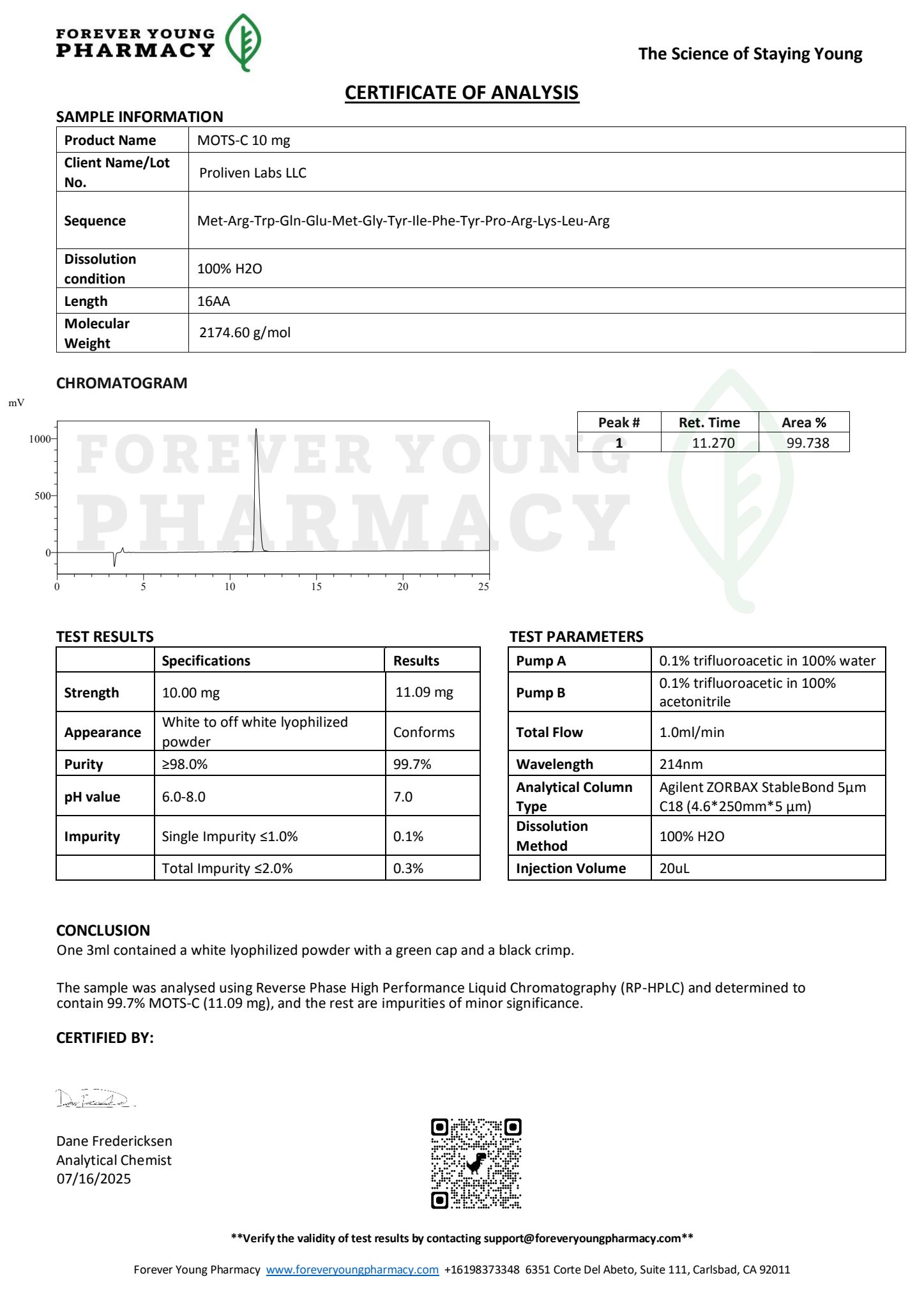
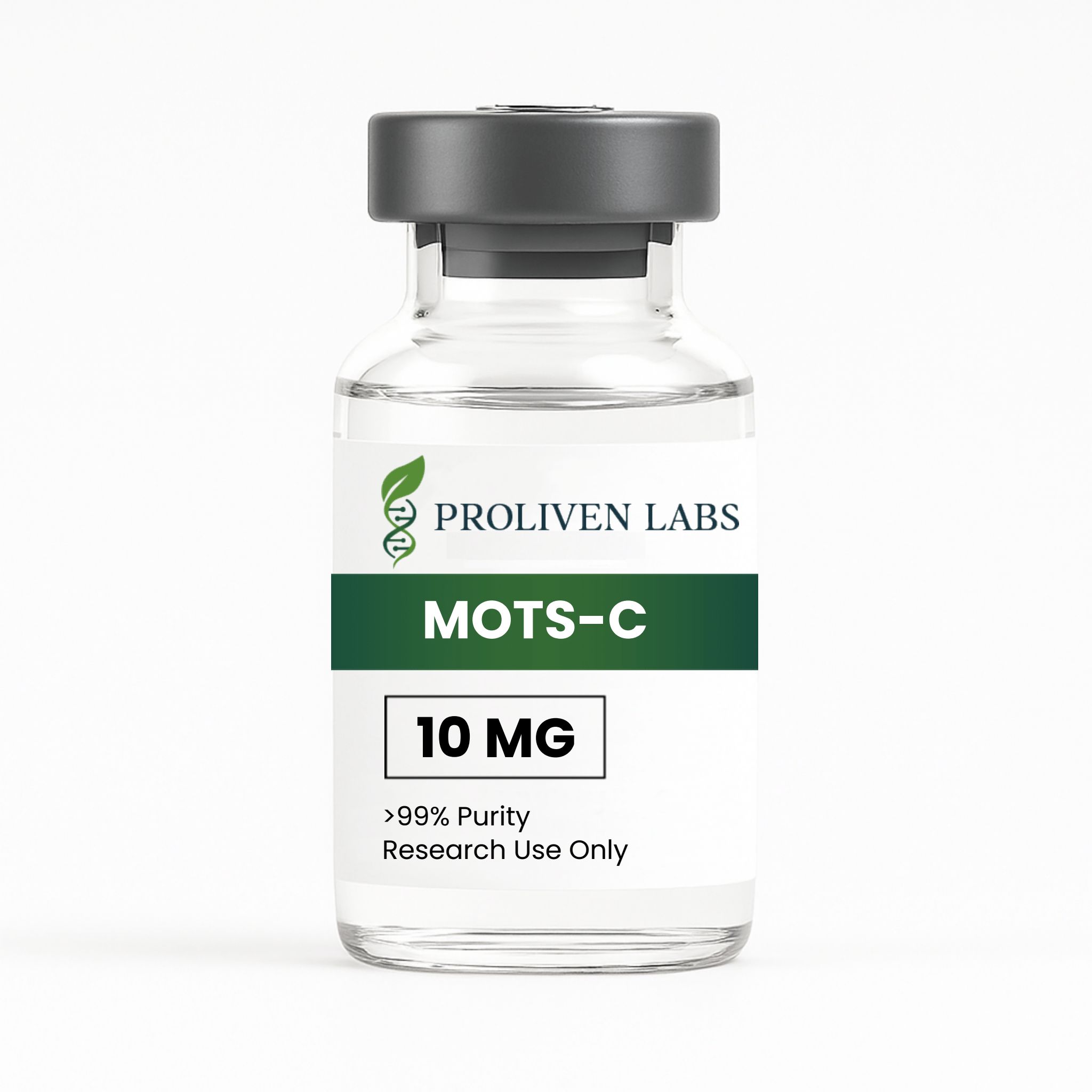
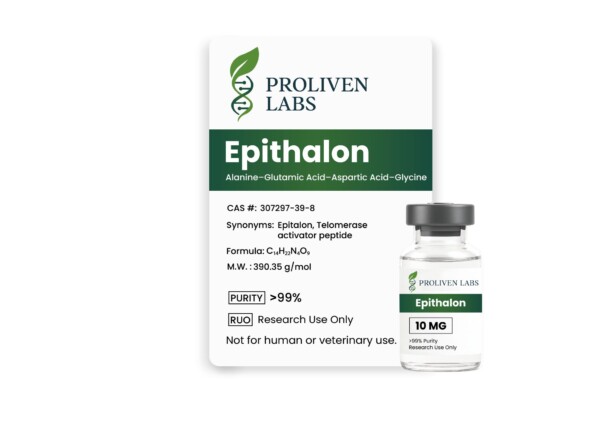
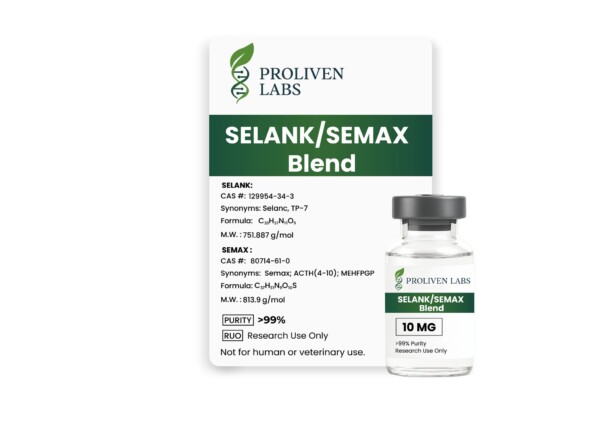
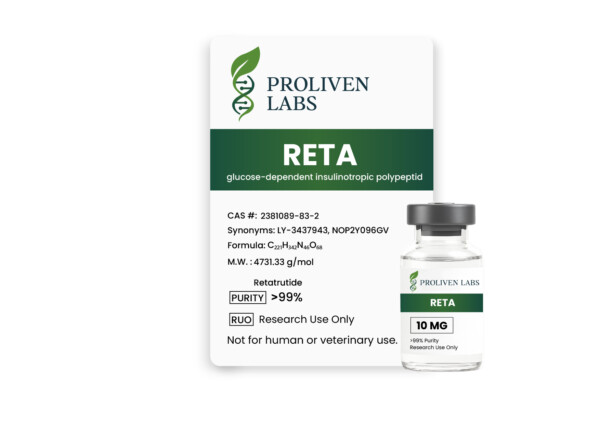
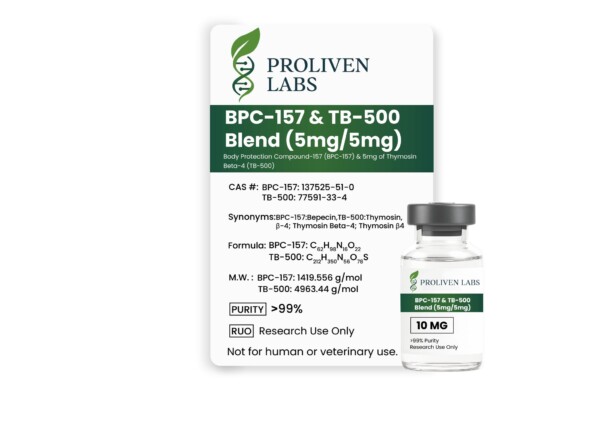

Reviews
There are no reviews yet.